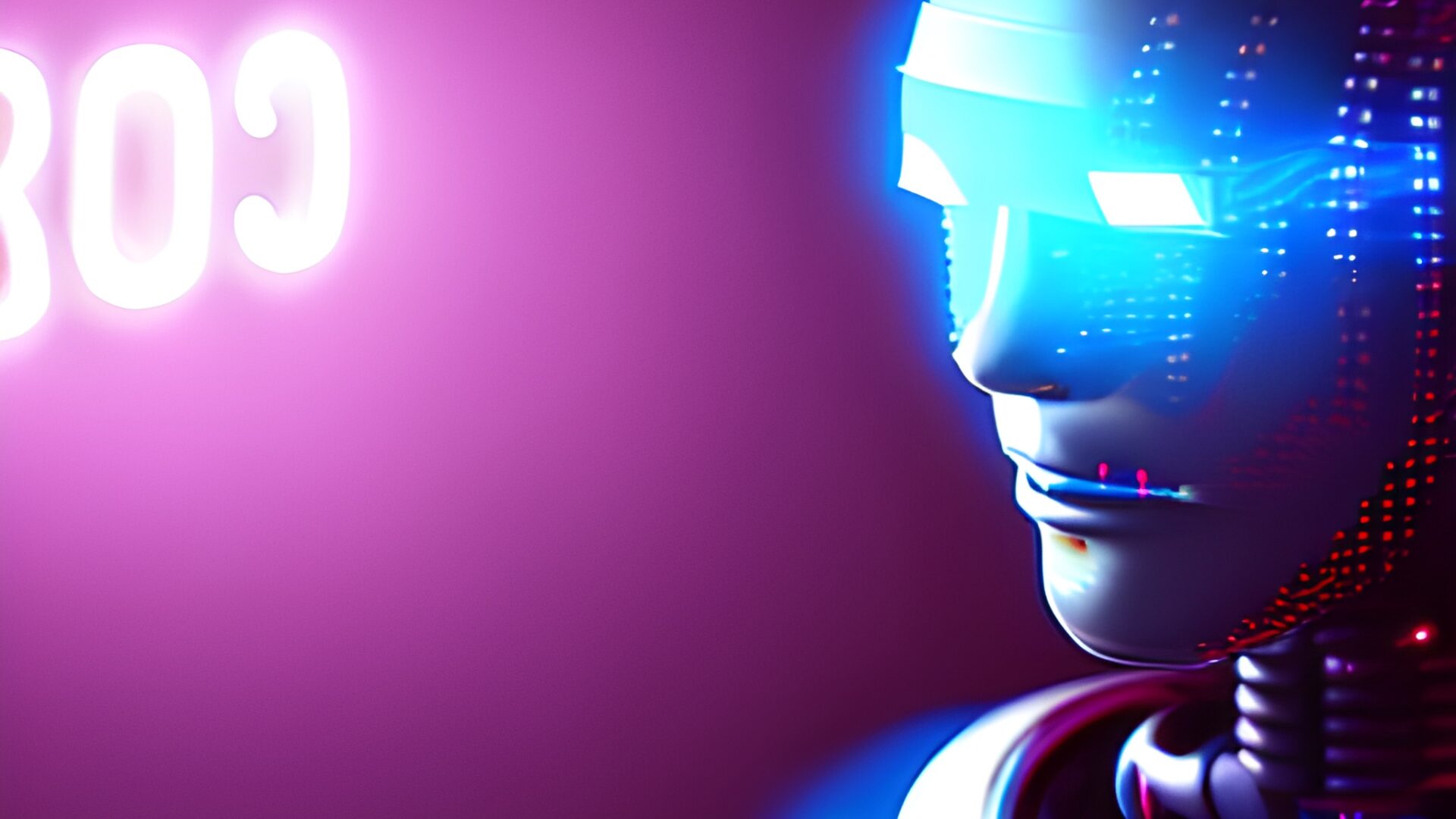OpenAI GPT-3 (Generative Pre-trained Transformer 3) is a state-of-the-art natural language processing system that allows machines to generate human-like text. GPT-3 not only can generate text, but also has the capability of understanding and responding to queries like a human.
With GPT-3, businesses now have an unprecedented power to quickly generate quality text and automate complex conversations. In this article, we discuss why GPT-3 is so important and how businesses can use it to transform their text and conversation automation capabilities.
Table of Contents
Introduction to OpenAI GPT-3: How Will OpenAI GPT-3 Change Everything?
OpenAI GPT-3 is a natural language processing (NLP) model developed by OpenAI that has the potential to revolutionize text and conversation automation. GPT-3 offers unprecedented capabilities for NLP, but it also comes with limitations in terms of reliability, interpretability, accessibility, speed and more. In this article, we will explore how GPT-3 works, its potential applications, and how its limitations may be addressed in future iterations.
GPT-3 uses the attention mechanisms of the Transformer architecture to learn context from textual based datasets. By learning context, GPT-3 develops some level of language “skills” which enables it to perform better on a range of language tasks. This means that GPT-3 is able to generate human-like language. Currently, GPT-3 is only available for beta testing and evaluation, but it is expected that OpenAI will open API access early next year, allowing companies to develop products based on the software.
The early demo is said to be part of the GPT-3.5 series of models that are built on a refined version of the GPT-3 instruction set. These are precursor models to the rumoured GPT-4 which is expected to be orders of magnitude more complex.
OpenAI GPT-3 has the potential to transform text and conversation automation, but it also comes with several limitations. The main problems with GPT-3 are its size and cost, its potential for bias, its lack of interpretability, and its lack of creativity. At 175 billion parameters, it is the largest language model ever created, and its training required massive amounts of computing power and data.
The issues of interpretability and creativity can be addressed by developing methods for better understanding how the model generates its outputs or by incorporating techniques such as transfer learning or multitask learning to enable the model to learn more complex and varied tasks. To address the issue of bias, OpenAI could improve the diversity and representativeness of the data used to train the model, or use debiasing techniques to reduce the biases in the model’s outputs.
OpenAI GPT-3 has the potential to revolutionize text and conversation automation, but it is unlikely to have the same broad and fundamental impact as the internet. However, language interfaces are going to be a big deal, and OpenAI GPT-3 could improve many fields.
What is OpenAI GPT-3 and What Can It Do?
GPT-3 (Generative Pre-trained Transformer 3) is a powerful open-source natural language processing (NLP) model developed at OpenAI. It is the world’s largest and most powerful language model, with over 175 billion parameters. GPT-3 was built on the premise of creating “friendly AI” that could benefit humanity as a whole.
GPT-3’s capabilities are impressive; it can generate large amounts of text based on a small amount of input, and can also create text summarizations and even program code. It is able to process all the text available on the internet and calculate the most statistically expected output. GPT-3 can be used to generate poetry, blog posts, PR content, resumes, and technical documentation – all with an output quality that is nearly indistinguishable from that of human-written content.
GPT-3 was released incrementally in order to monitor its use and prevent any potential issues. During the beta period, which ended on October 1, 2020, users were able to access the model for free after applying. After this period, OpenAI introduced a pricing system based on a tiered credit-based structure, with access ranging from a free level for 100,000 credits or three months to hundreds of dollars for larger scale access. Microsoft invested $1 billion in OpenAI to become the exclusive licensee of the GPT-3 model.
The power of GPT-3 has led to its integration with many applications, such as Algolia Answers, which combines the model with their advanced search technology to create a more comprehensive search experience. However, there have been concerns about the potential misuse of GPT-3, such as the automation of hate speech, or the generation of “fake news” articles. Additionally, bias can be an issue during the modeling process of AI systems.
How Does OpenAI GPT-3 Work?
GPT-3 represents a significant advance in natural language processing. It is the largest language model ever made and has been trained on a large volume of text data. This data includes Common Crawl, webtexts, books, and Wikipedia.
GPT-3 uses an artificial neural network to engage in deep learning. This allows it to train itself using brain-like algorithm structures and to learn and improve on tasks without being explicitly programmed to do so. The model is based on the concepts of transformer and attention similar to GPT-2.
The model was released during OpenAI’s beta period when users had to apply for access to use the model for free. However, the company eventually released a pricing model based on a tiered credit-based system that ranges from a free access level for 100,000 credits to higher-end plans for larger scale access.
GPT-3 has been used in various applications such as code-generating tools like Copilot, which is a product of GPT-3 and part of Visual Studio Code. It can also be used to create realistic chat dialog, quizzes, images and other graphics based on text suggestions.
In order to understand how GPT-3 works, it is important to understand its architecture. The model is a neural network machine learning model that has been trained using internet data to generate any type of text. It requires a small amount of input text to generate large volumes of relevant and sophisticated machine-generated text. The model has over 175 billion machine learning parameters, far more than any other language model before it.
Bias can be a challenge during the process of modeling an AI system. To address this issue, OpenAI has created a bias monitoring tool and also incorporated a mechanism to reduce biased outputs from the model.
Overall, GPT-3 is a powerful tool for natural language processing that has the potential to revolutionize text and conversation automation. With its expansive capabilities and vast potential for applications, GPT-3 will likely continue to shape the future of natural language processing.
How to Use GPT-3 in Your Projects
GPT-3 is a powerful artificial intelligence tool that can be used to transform text and conversation automation. In this article, we will explore how to use GPT-3 in your projects.
GPT-3 is an API that allows you to access the GPT-3 playground. The playground is an interface that is easy to use. You simply type in a text box and press the “Execute” button.
You can use GPT-3 to accomplish mundane, repetitive tasks. For instance, you can use GPT-3 to generate various layouts for the design required in different situations.
In addition, you can use GPT-3 to create interesting applications and games. For example, you can use GPT-3 to create a recipe generator or a tool that generates code snippets of the JavaScript API.
Benefits of Using OpenAI GPT-3
The biggest advantage of GPT-3 is its ability to produce high-quality, human-readable text with minimal input. It uses its massive 45TB of training data to spot patterns and generate results that are more accurate than traditional machine learning models. With GPT-3, businesses can automate text and conversation creation tasks, allowing them to quickly generate large volumes of content without sacrificing quality.
GPT-3 also has the potential to be used in a variety of other applications, from natural language processing and understanding, to question-answering and summarization. Its ability to process language in a more natural way can help improve customer experiences, save time and money, and reduce manual labor.
Finally, GPT-3 presents an opportunity for businesses to gain a competitive edge. By incorporating GPT-3 into their operations, companies will be able to quickly create high-quality content and automate processes that would otherwise require costly manual labor. Additionally, GPT-3 can be used as part of a larger AI strategy, helping companies to stay at the cutting edge of technology.
Implementing OpenAI GPT-3 for Text Generation
Using OpenAI GPT-3 for Text Generation can be a powerful way to create unique and interesting content. GPT-3 is a transformer-based text generation model which is pre-trained on a large corpus of raw English text with no human labeling. By leveraging this model, users can generate text by feeding in a partial sequence (sentence or piece of text) and the model will generate the next token (word or letter) in the sequence.
OpenAI now offers the ability to fine tune the GPT-3 models to get more suitable results for specific applications. For this, an annotated dataset is required which contains the generated text for each prompt. This process is different than few-shots learning as it requires updating the weights of the model.
A possible application of GPT-3 for text generation is creating instructions for tasks. For example, it can be used to generate instructions for grooming a cat or for creating subject lines for job offer emails.
In order to use GPT-3, you first need to create a profile on OpenAI and get access to the API. Documentation is available to help you understand the different endpoints and how to use them. You can also experiment with the platform and its applications through the playground page. Once you have gained an understanding of GPT-3, you can begin to build your own application.
Chat GPT from OpenAI GPT-3 for Conversational Automation
OpenAI has recently released their new chatbot tool, ChatGPT, that is capable of understanding and responding to natural language queries in a variety of ways. This tool is built on the powerful GPT-3 engine and can be used to write code, solve problems, and provide customer support.
The ChatGPT tool is a sibling model to InstructGPT which powers the text-davinci-003 generative text tool. InstructGPT uses reinforcement learning with human feedback to improve language models and better align them to human instructions. Currently, ChatGPT is only available for beta testing and evaluation but it is expected that OpenAI will open API access early next year. This will enable companies to develop products based on the software, such as coding, optimisation, and call centre tools.
In addition, OpenAI’s GPT-3.5 series of models are built on a refined version of the GPT-3 instruction set and are precursors to the upcoming GPT-4, which is expected to be orders of magnitude more complex. ChatGPT also features memory allocation, which allows it to remember earlier responses and act on them accordingly when writing a response.
Finally, healthcare scenarios have also been tested on OpenAI’s new chatbot and have received positive feedback. However, it is important to check for biases and misinformation before using this technology in a medical setting.
Overall, OpenAI’s new chatbot technology is incredibly useful for conversational automation and can help businesses create more efficient and effective customer support solutions.
Challenges of Using OpenAI GPT-3
OpenAI GPT-3 is a revolutionary language model that has the potential to revolutionize text and conversation automation. However, it is not without its challenges. While GPT-3 has been used to create articles, poetry, stories, news reports, and dialogue with just a small amount of input text, it also has limitations such as reliability, interpretability, accessibility, speed, and more that may prevent it from achieving its full potential.
Reliability is one of the biggest issues with GPT-3. Because it is trained on publicly available text, it can be prone to biases based on the data it has processed. For example, GPT-3 was found to have racial, gender, and religious bias likely due to bias inherent in the training data. As a result, trust is an important factor when utilizing GPT-3, as it cannot be provided with trust pre-installed. Instead, users must build a relationship of trust with the AI system and ensure that their input data is free from bias.
Another challenge to using GPT-3 is interpretability. As the model is trained on large datasets without much supervision, it can be difficult to understand how it arrives at the output it produces. This makes it hard for humans to fully trust anything it says, as there is no insight into how it reaches its conclusions. Additionally, GPT-3’s understanding of the world is frequently incorrect, meaning that it can be misused if not used with caution.
Speed is also a challenge when using GPT-3. As the model processes large amounts of data, it can take time to generate results. This can be a problem when trying to use GPT-3 in real-time applications, such as conversational bots. Finally, GPT-3’s lack of transparency is another limitation, as it is difficult to determine which decisions are being made by the model and how they are impacting those impacted by its use.
In conclusion, while GPT-3 has the potential to revolutionize text and conversation automation, there are still many challenges that need to be addressed before this technology can reach its full potential. From reliability and interpretability to speed and accessibility, GPT-3 faces numerous limitations that must be overcome if it is to be used safely and responsibly.
Conclusion: The Future of OpenAI GPT-3 and Text and Conversation Automation
OpenAI GPT-3 has proven to be a powerful tool for creating content, understanding complex queries, and automating conversations. It has already been adopted by more than 300 applications, generating an average of 4.5 billion words per day, and continues to scale production traffic. GPT-3 is incredibly versatile, being able to “program” itself with just a few examples or prompts. By removing the barrier of technical experience, mission-driven innovators can now use GPT-3 to make transformative change in the community.
The future looks bright for OpenAI GPT-3 and text and conversation automation. As more developers continue to build on the platform, OpenAI continues to improve the platform, implementing new features such as the Answers endpoint that searches provided information. With growing interest in natural language processing, OpenAI GPT-3 will continue to be a powerful and popular tool for creating content, understanding complex queries, and automating conversations.







Leave a Reply